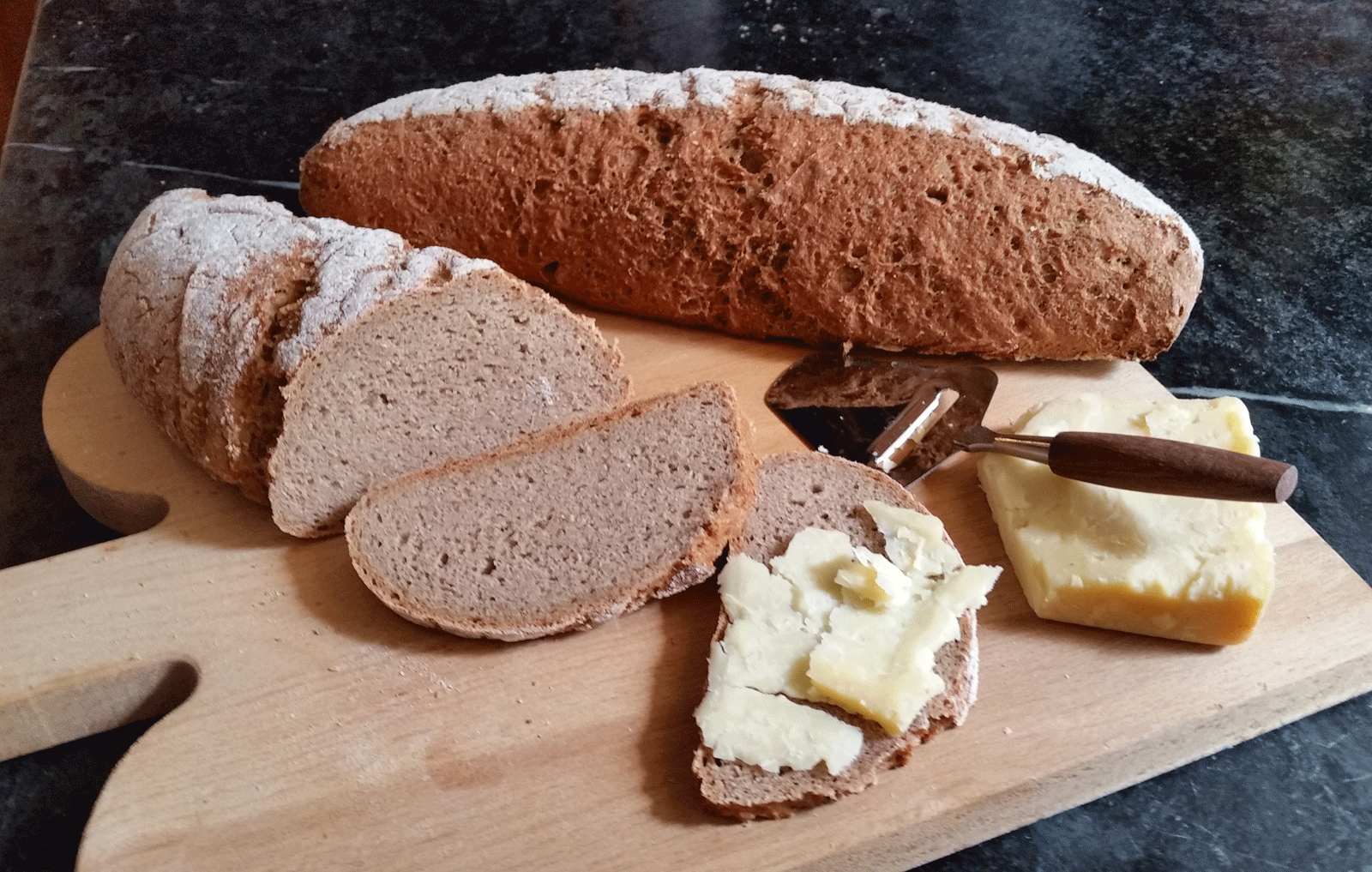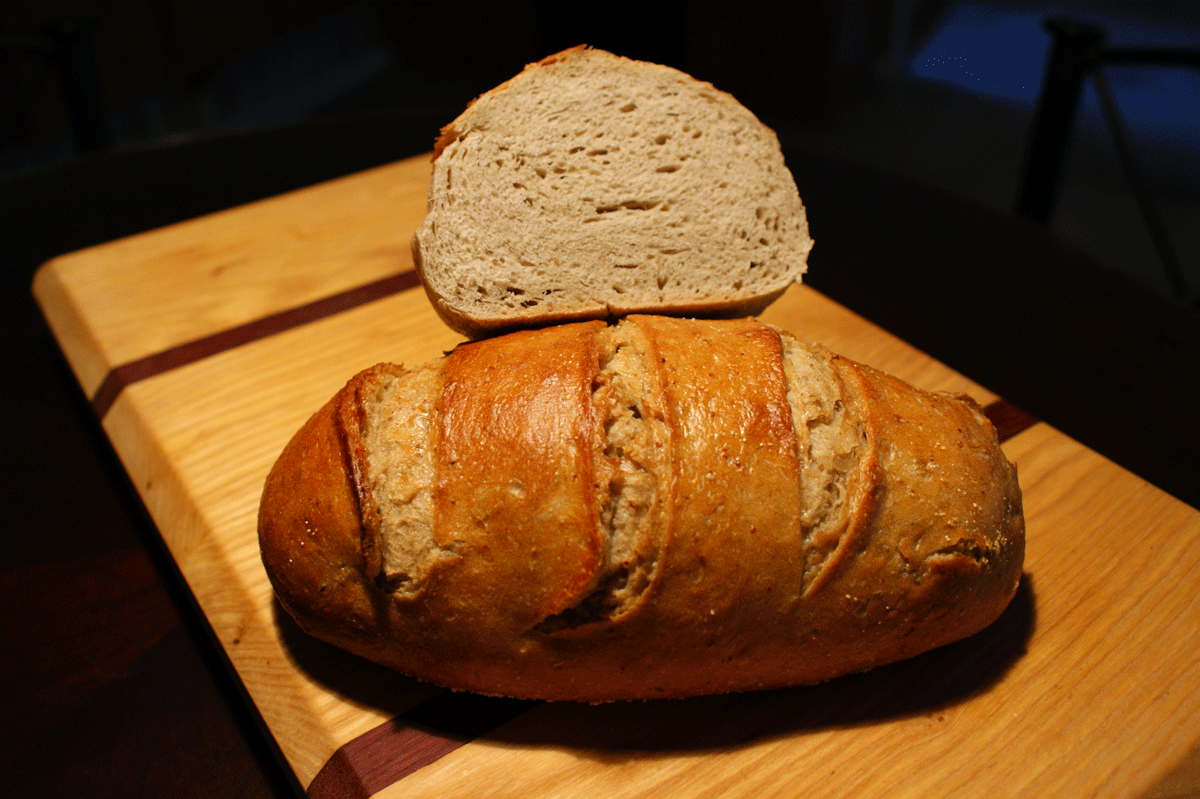| Rye %: | 80% |
| Stages: | Sponge, Soaker, Final dough |
| Leaven: | Rye sour culture, instant yeast |
| Start to Finish: | 22-23 hours |
| Hands-on Time: | 30-40 minutes |
| Yield: | Two 15-oz./425 g loaves |
I found this bread on Lutz Geißler‘s blog (Ploetzblog.de), who in turn got it from the German Baking Academy (Akademie Deutsches Bäckerhandwerk) in Weinheim, in the southwestern German state of Baden-Württemburg. I was intrigued because this loaf, at 80% rye, comes in at a higher percentage than most rye breads from southern Germany. It also uses an old-bread soaker, which moistens and tenderizes the crumb.



